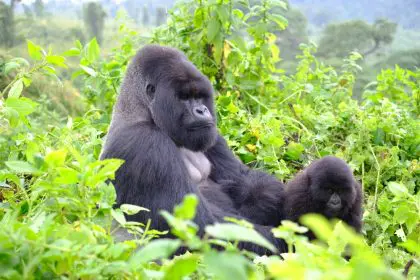Hibernation has long fascinated scientists and researchers, not only for its biological significance but also for its potential applications in medicine and space exploration. A recent study led by scientists from the University of Greifswald in Germany has shed light on the hibernation mechanisms of bats, revealing insights that could revolutionize our understanding of prolonged states of dormancy.
Understanding the science of hibernation
Hibernation serves as a vital survival strategy for many mammals, allowing them to conserve energy during periods of scarce resources. This phenomenon is not limited to cold climates; some animals even undergo a similar process known as estivation during hot, dry seasons. The recent study focused on the blood cells of both hibernating bats (Nyctalus noctula) and non-hibernating bats (Rousettus aegyptiacus) to explore how these cells adapt to extreme temperature changes.
Groundbreaking discoveries in blood cell behavior
The research team’s findings have opened new avenues for understanding how organisms adapt to extreme conditions:
Cellular transformations:
- Analysis of hundreds of thousands of erythrocytes from bats and humans
- Temperature-dependent changes in cell elasticity and viscosity
- Unique adaptation patterns in bat blood cells at lower temperatures
The study revealed that as temperatures dropped from 99ºF to 73ºF, all species exhibited transformed blood cells, becoming less elastic and more viscous. However, bat cells demonstrated remarkable adaptability, continuing to change as temperatures fell further, while human cells reached their limit at lower temperatures.
The space exploration connection
The implications of this research extend far beyond basic biology. As humanity contemplates interstellar travel, the ability to hibernate could be crucial for several reasons:
Long-duration missions:
- Reduced resource consumption
- Minimal psychological impact
- Lower radiation exposure
- Extended crew longevity
- Spacecraft size optimization
NASA’s interest in human hibernation
The space agency has been exploring hibernation possibilities for years:
Current focus areas:
- Metabolic reduction techniques
- Temperature regulation methods
- Circulatory system maintenance
- Brain activity monitoring
- Life support requirements
Gerald Kerth, the lead researcher, emphasized the potential benefits of inducing low-temperature states during interstellar flight, though he cautioned that practical applications remain years away.
Medical applications and surgical innovation
The research has immediate implications for medical procedures:
Surgical applications:
- Enhanced deep hypothermic circulatory arrest
- Improved organ preservation
- Better trauma response
- Reduced complications
- Faster recovery times
Current surgical techniques
Understanding how hibernating animals manage blood cell transformations could revolutionize existing procedures:
Areas of improvement:
- Temperature management
- Blood flow optimization
- Tissue preservation
- Oxygen utilization
- Recovery protocols
Biological mechanisms of hibernation
The study revealed complex adaptations that make hibernation possible:
Key factors:
- Metabolic rate reduction
- Temperature regulation
- Cellular protection
- Waste management
- Energy conservation
Future research directions
Scientists continue to explore several aspects of hibernation:
Priority areas:
- Genetic factors
- Hormonal triggers
- Neural mechanisms
- Cellular adaptation
- Environmental influences
Challenges and obstacles
Implementing hibernation technology faces several hurdles:
Technical challenges:
- Safety concerns
- Equipment requirements
- Monitoring systems
- Revival protocols
- Long-term effects
The role of artificial intelligence
AI and machine learning are contributing to hibernation research:
Applications:
- Data analysis
- Pattern recognition
- Prediction modeling
- System optimization
- Risk assessment
Environmental considerations
Understanding hibernation could also benefit conservation efforts:
Impact areas:
- Climate change adaptation
- Species preservation
- Habitat protection
- Population management
- Ecosystem stability
Ethical implications
The research raises important ethical considerations:
Key concerns:
- Human testing protocols
- Risk assessment
- Informed consent
- Long-term effects
- Societal impact
International collaboration
Global research efforts are advancing our understanding:
Collaborative aspects:
- Data sharing
- Resource pooling
- Expertise exchange
- Standardized protocols
- Joint funding
Economic implications
The potential economic impact of hibernation technology is significant:
Market opportunities:
- Medical applications
- Space industry
- Conservation efforts
- Research funding
- Technology development
Conclusion
The study of hibernation in bats and other animals continues to reveal valuable lessons about survival and adaptation. As we strive to become a space-faring civilization, the secrets of hibernation may hold the key to overcoming the challenges of interstellar travel. Additionally, the medical community stands to benefit from these findings, potentially leading to advancements in surgical techniques and patient care.
The convergence of hibernation research, space exploration, and medical innovation represents a fascinating frontier in scientific discovery. While practical applications may still be years away, the groundwork being laid today could fundamentally transform our approach to long-duration space travel and medical procedures.
As research progresses, we move closer to understanding the complex mechanisms that allow animals to enter and maintain prolonged states of dormancy. This knowledge could ultimately help humanity achieve its dreams of exploring distant stars while simultaneously improving medical care here on Earth. The journey from observing bat blood cells to enabling human hibernation may be long, but each discovery brings us closer to these remarkable possibilities.













